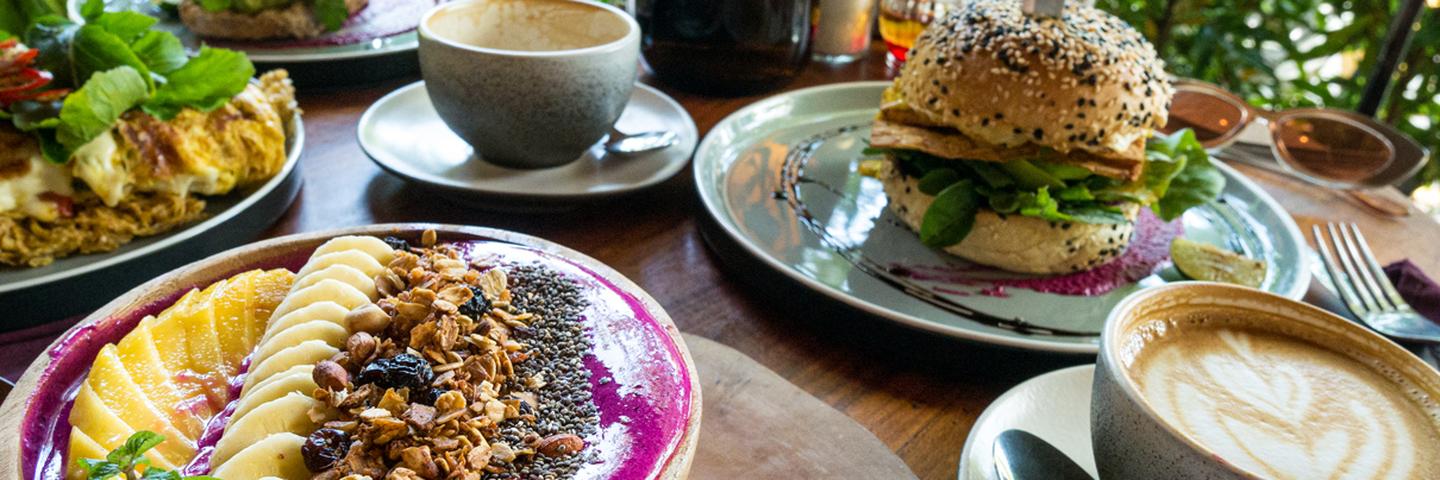Located right in the heart of Indonesia, Bali is renowned for its breathtaking landscapes, rich cultural heritage, and welcoming atmosphere.
Bali, also known as the “Island of the Gods” features lush, green rice terraces, temples and pristine beaches.

But hold on, there is even more to Bali. The island is a hub of celebrations and festivals, showcasing its cultural heritage and it is home to a rich food culinary scene. So, what food is Bali known for?
Balinese food is all about bringing together the amazing flavors from the sea, the land, and the vibrant local culture. Some of the authentic dishes include babi guling, nasi campur and aromatic sate. The island's culinary offerings reflect its rich cultural heritage and vibrant flavors.

What food is Bali known for? Bali's Famous Food
Bali’s food scene beautifully reflects the incredible diversity found throughout Indonesia, but it has its very own special twist that sets it apart. Food in Bali is not just a meal – it is an entire vibe that blends tradition, flavour, and good times.
Balinese food is a special blend of local traditions mixed with flavours from different parts of Indonesia, as well as influences from China and India. Essential ingredients used in Balinese food such as soy sauce, sesame and other seasonings and spices like cumin, turmeric and coriander were introduced by the Chinese and Indian traders back in the day.
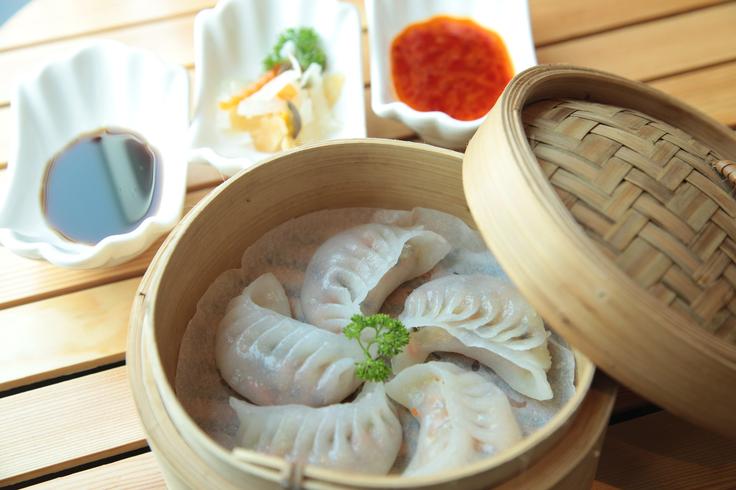
Over time, Balinese cuisine has evolved to include these diverse tastes and cooking methods, resulting in a unique combination of different culinary styles. This mix gives Balinese food a distinctive and bold flavour profile, thanks to the use of various spices and seasonings
known as "Base Gede.”
What is the foundation of Balinese cuisine?
If you have been to Bali or any part of Indonesia generally speaking, you would have noticed that most foods are served with rice or contain rice in some way. Well, this is because rice holds a significant place in Balinese cuisine.
It is a major part of their diet and culture, grown locally using a traditional irrigation system called Subak. The Balinese see rice as a gift from the goddess Dewi Sri, which highlights its importance in their daily lives and ceremonies.
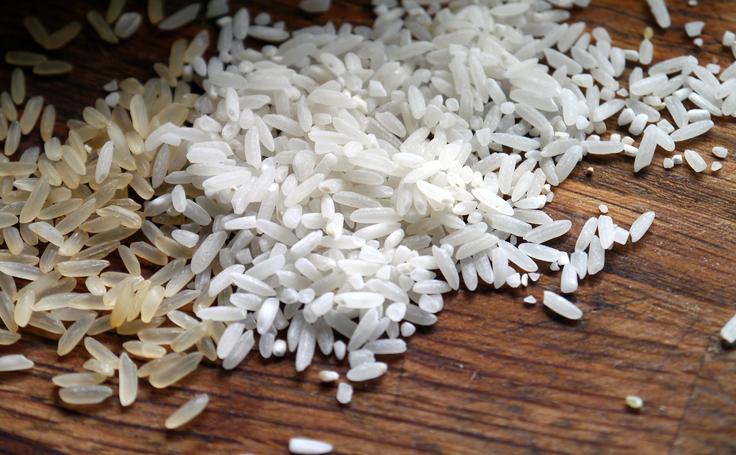
Balinese people also use the following as crucial and key ingredients for their cuisine:
Seeds: white pepper, black pepper, coriander, cumin, clove, nutmeg, sesame seed, and candlenut.
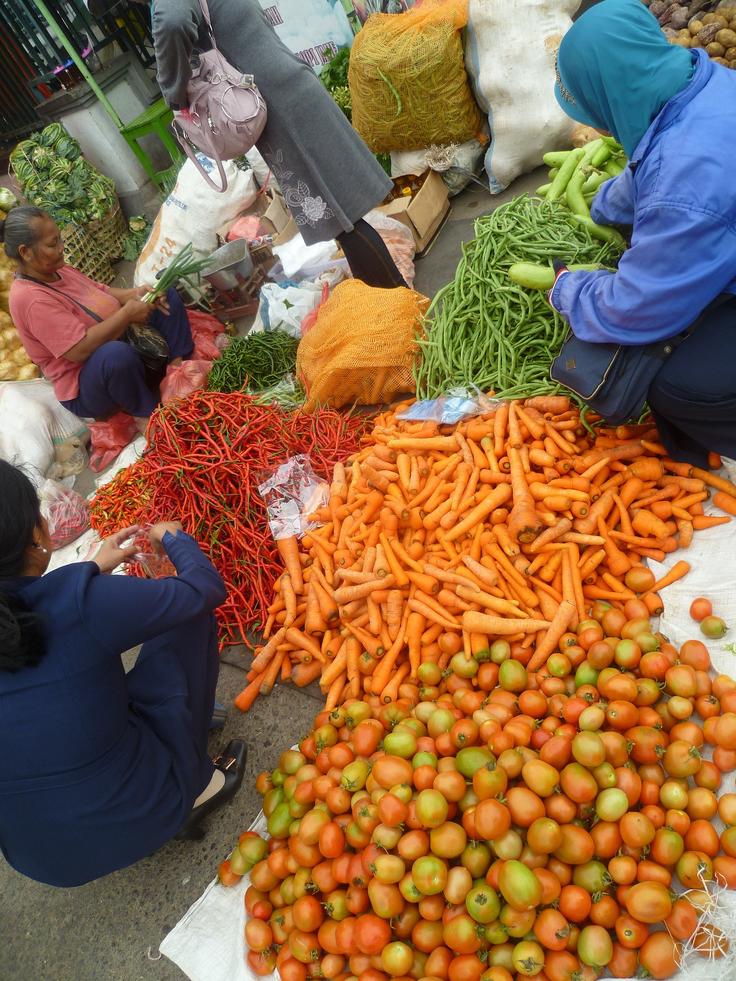
- Fragrant Roots: Shallots, garlic, greater galangal, lesser galangal, turmeric and ginger.
- Chilli peppers: Green and red Balinese chilli peppers.
- Palm sugar
- Fish Paste
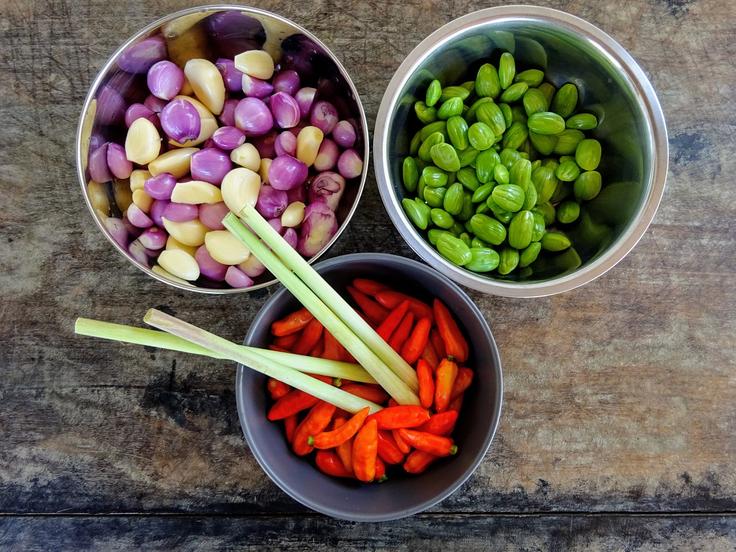
Balinese staples and tradition
Balinese cuisine is all about simple yet flavourful ingredients that come together to create delicious meals. There are essential and almost always present staple foods in Balinese cuisine. These are:
- As mentioned above, the primary staple is rice, which is usually accompanied by a variety of dishes.
- Then, Balinese food stresses the use of vegetables, you will frequently find a mix of veggies like cassava, green beans, and water spinach in your Balinese dishes.
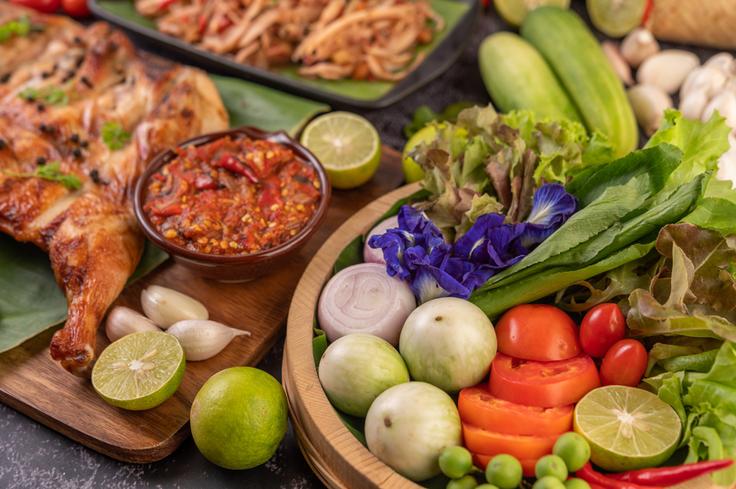
- Lastly, spices play a big role in Balinese dishes, adding depth and richness. There are two main seasonings that give Balinese food its distinctive taste: sambal, a chilli-based sauce, and basa gede, a basic spice paste. Basa gede is a mixture of fragrant seeds and root spices, pounded together to create a paste.
This potent mixture combines spices such as shallots, garlic, turmeric, ginger, and others, serving as the base for numerous savoury dishes. Usually this paste, along with a bit of fish paste or shrimp paste, adds a flavourful punch to many dishes found in traditional Balinese dishes. Pretty incredible!
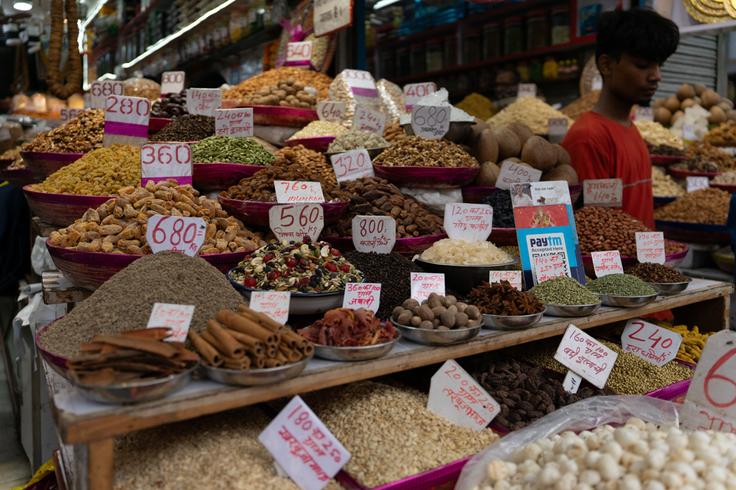
Not least important is to mention the usage of seafood, such as clams, prawns, and fish like tuna and red snapper, together with chicken, pork, and duck. Normally these meets are marinated first with the iconic mix of local spices to give them that unique Balinese taste.
Although bold and flavourful dishes are often a unique association with Balinese cuisine, there is much more to it. Balinese traditional food is oftentimes all about simplicity and bare dishes like daluman leaf jelly and roasted cassava with coconut sugar and sea salt are often made to emphasise the use of plant-based ingredients and raw simple ingredients given by the land.
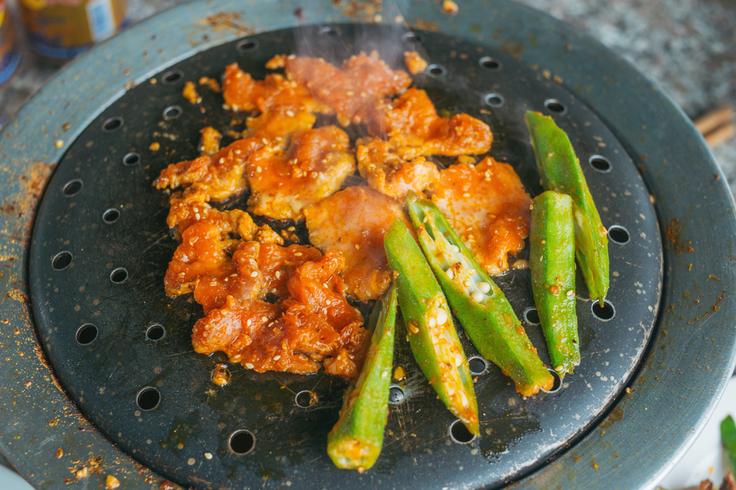
Balinese food is deeply connected to their tradition, religion and sense of community. In Bali and it is more than just the food on your plate. For the Balinese people, the kitchen is a holy place, blessed by the gods, representing the cycle of time. This symbolism is widely spread in the traditional Balinese cuisine, known as the Paon Phyloshipy.
Festival feasts play a significant role in the realm of Balinese food. Not only are they occasions for indulgence, but they also serve as crucial communal events. Whether it's a family affair or a village-wide celebration, these festivals bring people together for preparation and enjoyment.

In the early hours of the day, locals gather to jointly prepare the ceremonial feast. Each person contributes and plays a role, fostering a sense of unity and cooperation.
For the Balinese, food holds deep meaning – it symbolises ritual, community, offering, family, inheritance, and the environment. Within this context, it becomes evident how Bali's cultural heritage is interwoven into its cuisine, creating a delicious tapestry of tradition and flavours.
Which delicious food is the specialty of Bali? 38 Must-try local dishes in Bali
Visiting Bali offers a range of experiences, from immersing yourself in its rich culture to seeking adventure, enjoying vibrant parties, or simply indulging in the lap of luxury with spa treatments, lounging on pristine beaches, and of course shopping!
However, exploring the island's genuine and traditional local cuisine is an absolute must! From the mouthwatering babi guling, the flavourful lawar, coconuts, and fresh seafood to the iconic dishes like nasi campur or Bebek Betutu are an unmissable experience when in Bali!
- Sate: Let's talk about the mouthwatering Sate in Bali. You have got two awesome varieties to try. First up, there's the Traditional Satay Lilit, where minced meat (like beef, chicken, fish, pork, or even turtle meat) is mixed with freshly grated coconut, coconut milk, and Balinese bumbu spices.

Sates are the typical meat skewers with all the flavour! This flavorful mix is wrapped around a lemongrass stick or bamboo skewer and grilled over charcoal. You are left with tender, fragrant, slightly spicy goodness that's perfect whether you're starting your meal or making it your main course.
Next, there are the Satay Skewers, where chunks of chicken, goat, mutton, beef, and pork (or even fish, tempeh, tofu, eggs, or a combo) get marinated with spices and then grilled to perfection. These skewers are served with rice cakes, peanut sauce or chilli tomato sambal, and crisp cucumber.
You can find sate all over Bali, and no matter where you try it, you're in for a taste of rich flavours and unique spices that make this dish a true standout.
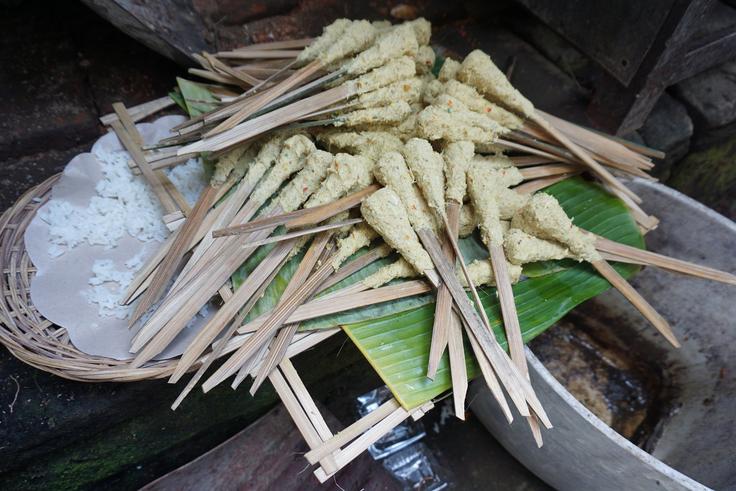
- Babi Guling: For non-vegetarians, Babi Guling is an absolute must-try in Bali. It is a Balinese specialty often served at traditional ceremonies and celebrations, but you don't need a special occasion to enjoy it.
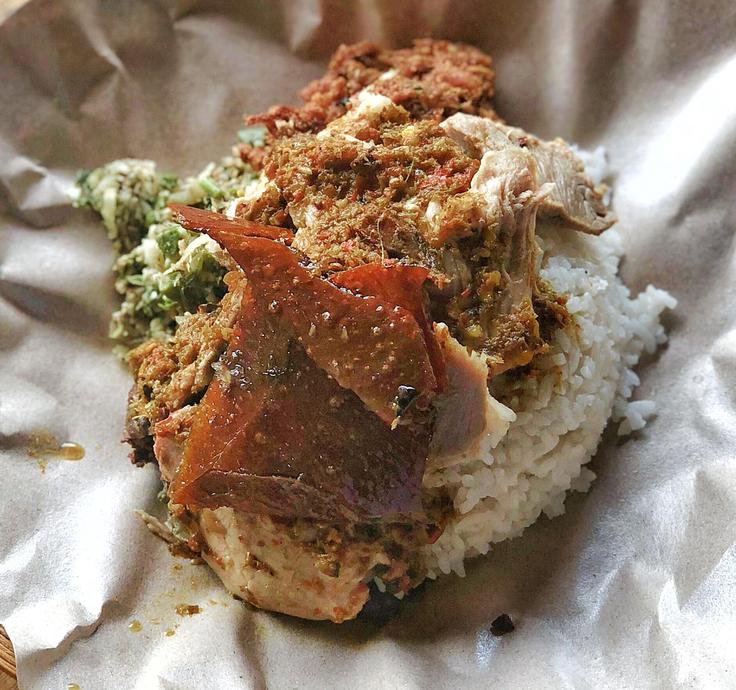
You can find this delicious dish at local warungs and restaurants, especially in Ubud. One popular spot to dive into Babi Guling is Ibu Oka Babi Guling, and another buzzworthy place is Babi Guling Genteng Jumbo.
So, what's Babi Guling? It is a succulent roasted suckling pig, marinated with Balinese spices known as bumbu Bali. The result? Tender, flavorful meat that's been slow-roasted until the skin is crispy and the meat is juicy.
This dish is often accompanied by steamed rice, lawar, and a spicy sambal that gives it a real kick. Oh, and don't forget to snag some crispy skin – it's a burst of flavor you don't want to miss.
- Gado-Gado: If you are into veggies, Gado-Gado is your jam. It's a delightful mix of steamed or blanched vegetables like bean sprouts, spinach, cabbage, and long beans, paired with boiled potatoes, fried tofu and tempeh, and hard-boiled eggs.
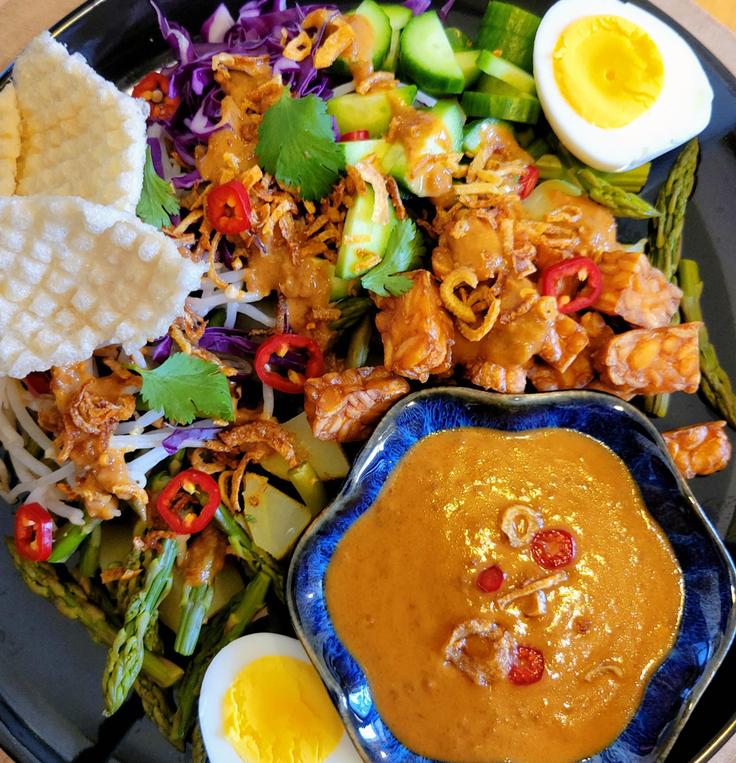
The magic happens when these ingredients get coated in a creamy, nutty peanut sauce. You might also find krupuk (crispy crackers) and shrimp chips tagging along. That peanut sauce? It's a blend of ground peanuts, garlic, shallots, aromatic ginger, palm sugar, and chili that's essential to this dish. The veggies and protein are served up with the sauce, creating an explosion of flavours that's both satisfying and delicious.
Gado-Gado is a fantastic vegetarian dish that's perfect for a light lunch or a snack. You can find it at local warungs, street food stalls, and restaurants all over the place. It's a must-try for anyone wanting to dive into the diverse and mouthwatering world of Balinese vegan cuisine.
- Nasi Campur: Nasi Campur Bali is the go-to if you're craving a mix of flavours and textures that define Balinese cuisine. It is a rice dish that comes with a bunch of sides – think babi guling (roasted suckling pig) or betutu (spiced chicken or duck), mixed vegetables, and a sprinkle of spicy sambals.

You'll find this dish all over, from local warungs to special occasions and ceremonies. The blend of flavours and textures in Nasi Campur Bali perfectly captures Balinese food's essence. Anyone curious about local food culture should definitely give it a go.
- Betutu: Calling all Bali visitors! You can't miss Betutu. It is a traditional Balinese dish where chicken or duck is baked in husks over a fire, giving it a unique flavour.
The meat is slow-cooked in palm leaves with a special spice mix called bumbu Bali, resulting in tender, flavourful goodness that's sure to satisfy. You will usually find it served with placed kangkung, crispy-fried peanuts, and sambal terasi.
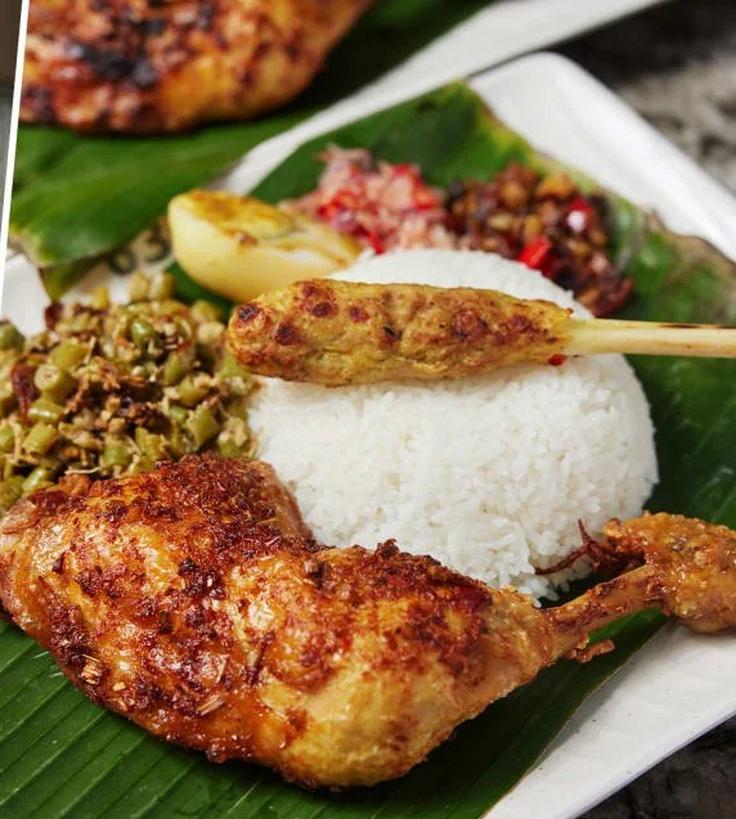
Traditional Betutu takes time, like 4 to 8 hours, but trust us, the authentic Balinese flavors are so worth it. If you're after that genuine Balinese experience, don't miss out on Betutu – it's one of the island's most famous dishes.
- Tum or Pepes: If you're on a mission for authentic Balinese food, Tum or Pepes should be on your list. This dish can be made with various ingredients, like ground meat, tofu, veggies, and proteins such as pork and beef.

These goodies are mixed with Balinese bumbu spices and wrapped in banana leaves before being grilled or steamed. This cooking method lets the flavors of the spices seep into the ingredients, creating a tender and flavor-packed dish that's perfect as a snack or a side. Tum or Pepes is a street food fave in Bali, found in local warungs and markets.
- Lawar: Get ready for Lawar, a Bali must-try. It's all about fresh veggies – fern tips, young papaya, jackfruit – mixed with kaffir lime leaves, grated coconut, and sambal goreng (a mix of fried shallots, chilies, and shrimp paste).
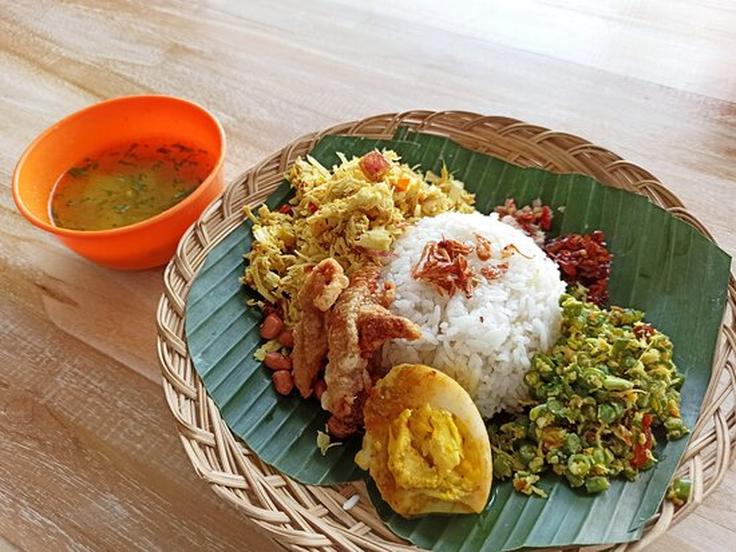
Add in some minced chicken, pork, lamb, beef, or duck marinated with Bumbu Bali, a Balinese spice paste, and cooked with coconut milk. What sets Lawar apart is its name based on its protein – chicken, pork, or jackfruit.
Some variations even include blood from butchered animals, usually pork or chicken, mixed with spices. Due to its richness in protein and fat, Lawar should be enjoyed right away. It's usually good for only half a day.
- Seafood (Jimbaran Style):vIf you are all about seafood, don't skip Jimbaran-style seafood in Bali. It's a sensory feast you can't pass up. Imagine an array of grilled seafood – fish, prawns, squid, crabs, and more – all marinated with Balinese spices that'll make your taste buds dance.
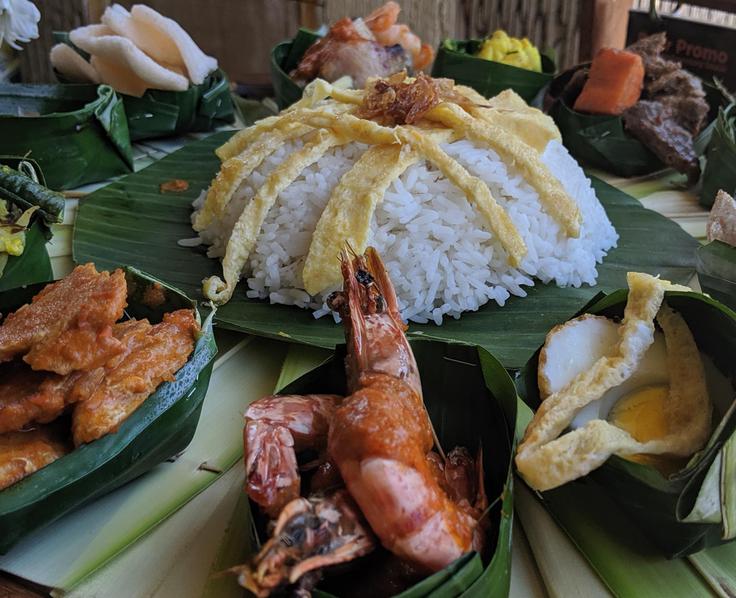
This dish comes with steamed rice, mixed veggies, and sambals that balance and deepen the seafood's flavours. The best spot for this delightful treat is a local seafood market restaurant along Jimbaran Beach.
Head there in the afternoon or early evening for food with a view – the beautiful sunset over the ocean. Trust us, giving Jimbaran-style seafood a go during your Bali visit is a decision you won't regret.
- Sambals: Let's talk sambals – these little flavour bombs are a big part of Bali's food culture. Sambal is a chilli-based sauce that adds a kick of flavour and heat to our dishes. In Bali, sambals aren't just about heat – they bring complexity to the taste. We've got a bunch of sambals, each with its own unique flavour and heat level.
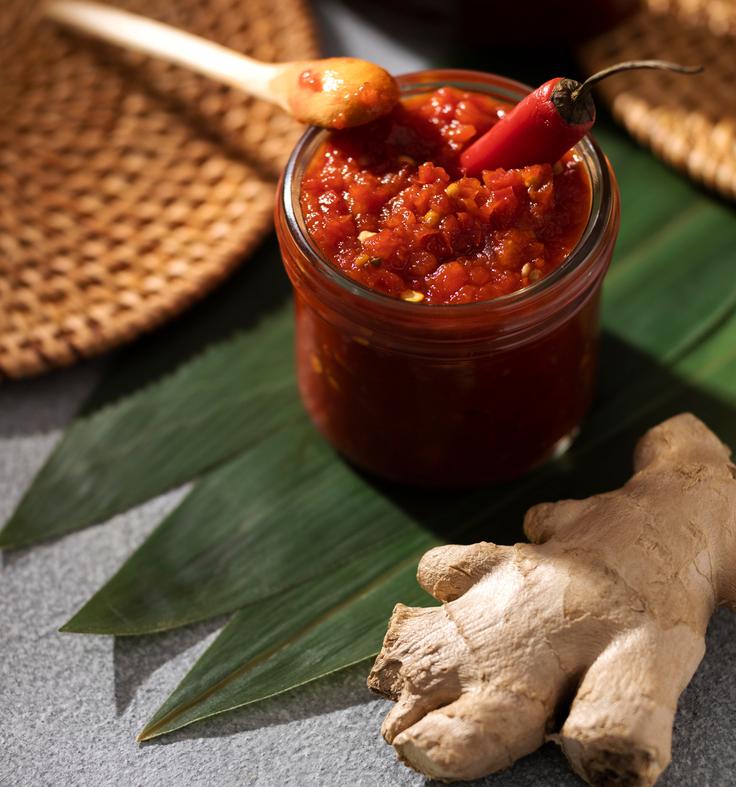
One superstar is sambal matah, made with shallots, lemongrass, chili, and coconut oil. It's fresh and fragrant, perfect for fish and grilled meats. Another player is sambal bejek, mixing chili, tomato, and shrimp paste for a rich, bold flavor that pairs amazingly with seafood and veggies.
Sambal terasi is a pungent one, made with chili and shrimp paste, perfect for grilled meats and veggies. Sambal kecombrang? It's unique, using torch ginger, shallots, and chilli for a refreshing twist that's great with seafood and grilled meat. Lastly, sambal mbe is simple with fried shallots for those who prefer a milder flavour.
- Soups (Bakso & Ares): Let's talk about soups that warm your soul in Bali. First up, we have got Bakso, a cherished Indonesian meatball soup found all around the island. These meatballs are made with ground beef or chicken, mixed with a medley of spices, and boiled in a broth bursting with flavors from herbs, garlic, and shallots. Served with noodles, veggies, and toppings, Bakso makes for a hearty and satisfying lunch or snack.
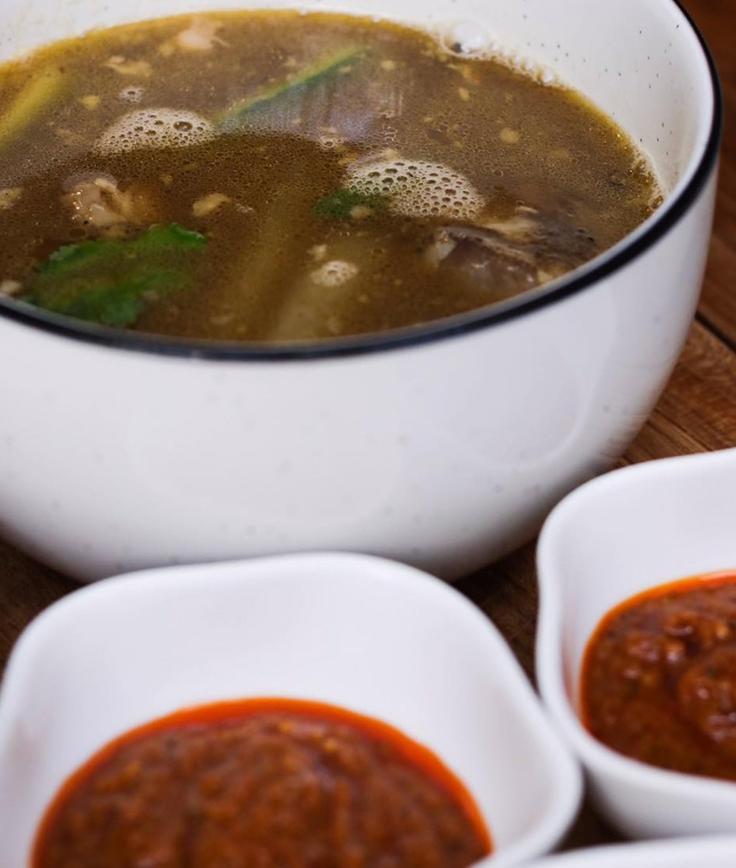
Another soup on the must-try list is Ares. This unique dish features young banana stems, jackfruit, and your choice of chicken, pork, or duck (or beans for the veggie crowd). Often served at traditional Balinese ceremonies, Ares delivers a rich and refreshing taste that fills you up just right.
Now, let's dive into Balung – a popular slow-cooked Balinese pork dish that's the ultimate comfort on a chilly day. It's made with pork ribs, Balinese bumbu spices, and other aromatic flavours that come together in a rich and inviting soup.
Then there's Soto babi, a classic Indonesian soup that's all about pork, bean sprouts, and a flavourful broth amped up with bumbu Bali paste. You'll find it served with rice or noodles at local warungs across Bali.
Last but not least, Jukut Undis is a vegetable soup made with black beans, coco, and a symphony of herbs and spices. This option is a favourite for vegetarians, and it's often enjoyed with a side of rice – a true Balinese treat.
- Nasi Goreng or Mie Goreng: Let's talk about nasi goreng and mie goreng – two Bali superstars in the food world. First, nasi goreng, the fried rice dish that's a whirlwind of spices, veggies, and meats like chicken, pork, or shrimp. It's all stir-fried to perfection with garlic, shallots, and chillies, giving you that irresistible spicy and savoury taste.
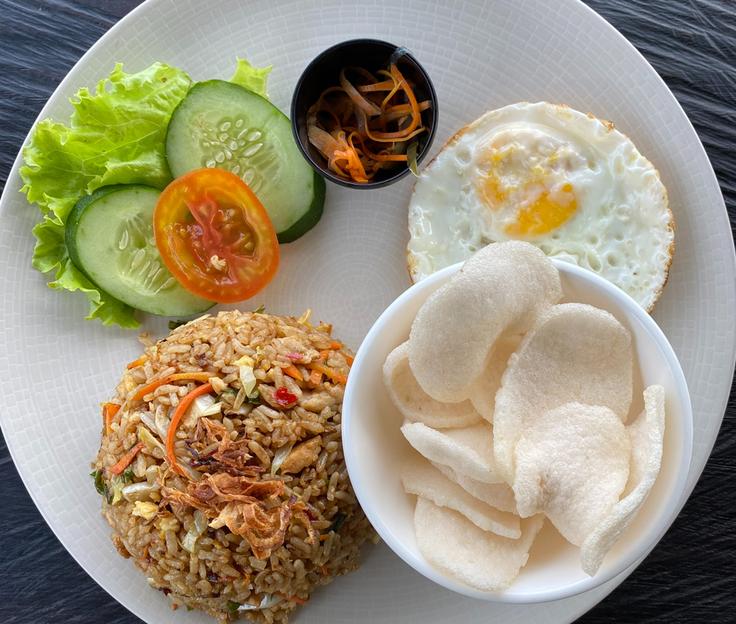
Next, mie goreng steps in – a fried noodle sensation made with egg noodles, veggies, and spices. Chicken or pork can join the party too. These dishes are crowned with a fried egg, adding creamy deliciousness to the mix.
Whether you're on a tight schedule or craving something scrumptious, nasi goreng and mie goreng are your go-to options. You can find these delightful treats at local warungs or fancier dining spots.
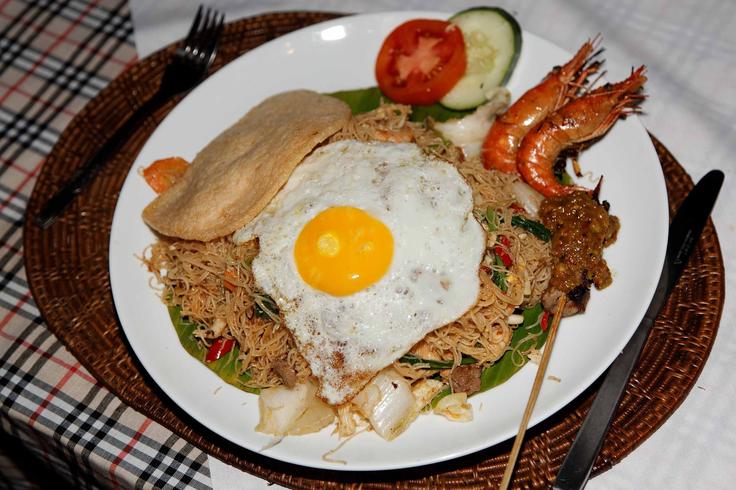
- Jamu Herbal Tonic: Now, let's explore something that's not just about flavour, but also about health – Jamu Herbal Tonic. This traditional Balinese herbal drink has been cherished for ages for its medicinal benefits.
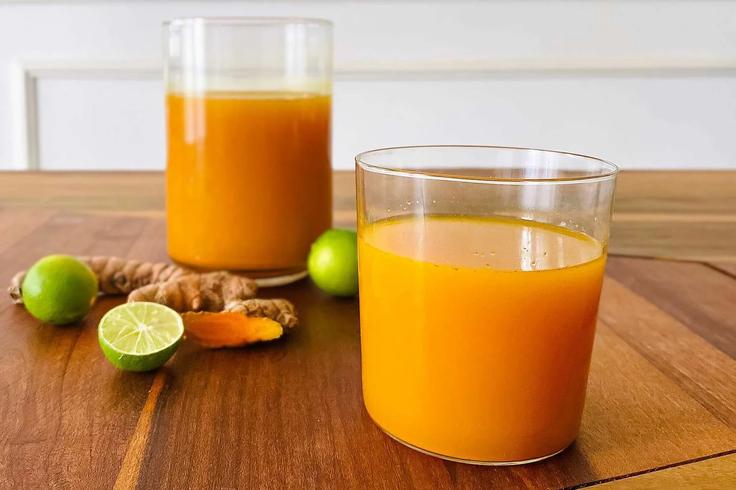
Picture a blend of natural wonders – roots, leaves, fruits, and seeds – all coming together to create a healing tonic. Jamu is believed to aid with digestion, headaches, low energy, and even carry anti-inflammatory and anti-aging properties.
There are various types of jamu, each with its own set of ingredients and health perks. Some favorites include Kunyit Asam (tamarind and turmeric), Beras Kencur (aromatic ginger and rice), and Temulawak (Javanese ginger).
- Pisang Goreng: Calling all sweet tooths – Pisang Goreng is your answer! These fried bananas come in all shapes and sizes, from Bali's own petite and sweet kind to larger variations.
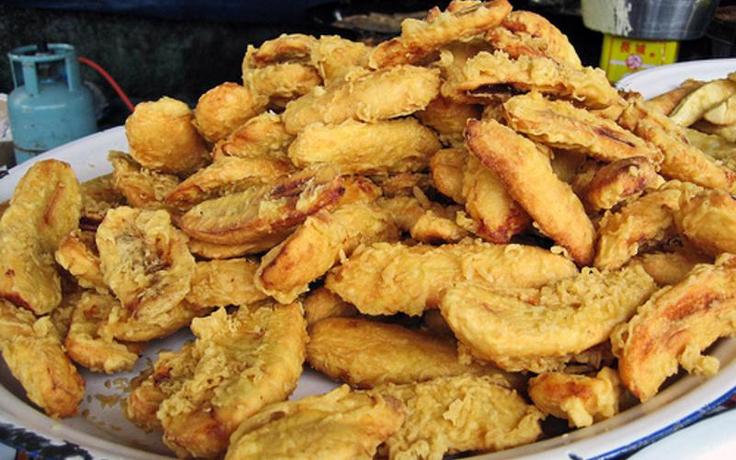
No matter their size, they're all beautifully fried and served with a touch of delight – condensed milk, honey, coconut, or even a scoop of ice cream.
- Sayur Urab: Let's talk about Sayur Urab – a dish that, at first glance, might seem like a "boiled salad," but when done right, it's a true healthy delight.

Imagine a medley of mixed veggies combined with grated coconut, topped with a delightful, crispy sambal made from golden-fried shallots, galangal, chilli peppers, and garlic. It's a mix of flavours and textures that'll change the way you see boiled veggies.
- Tuna Sambal Matah: Hold on tight for this favourite – Tuna Sambal Matah. Fresh tuna coated with Balinese flavour powerhouse, basa gede (Bumbu Bali), seared to perfection.
Now, picture"raw" sambal perched on top – a combo of shallots, lemongrass, chilli peppers, and ginger, drenched in zesty lime juice. Trust us, the taste is every bit as amazing as it sounds.
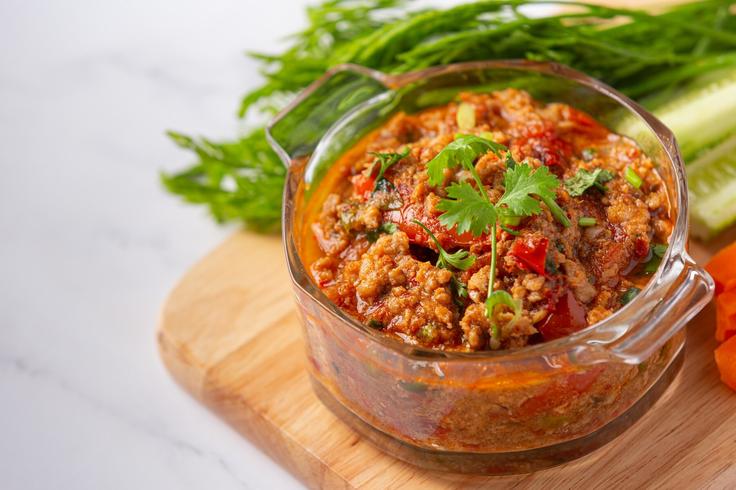
- Tempe Manis: Time for a texture adventure with Tempe Manis. Tempe, those pressed and fermented soybeans, take the spotlight. They're cut into crispy pieces and fried up.

Then comes the magic – a sweet palm sugar sauce mingled with crispy garlic and fiery chilli peppers. It's a dance of flavours and textures that's absolutely delightful.
- Opor Ayam: Brace yourself for Opor Ayam – a chicken, carrot, and potato combo swimming in a spicy curry sauce amped up with basa gede and creamy coconut milk. The result is a dish that's rich, delicious, and packed with flavour.
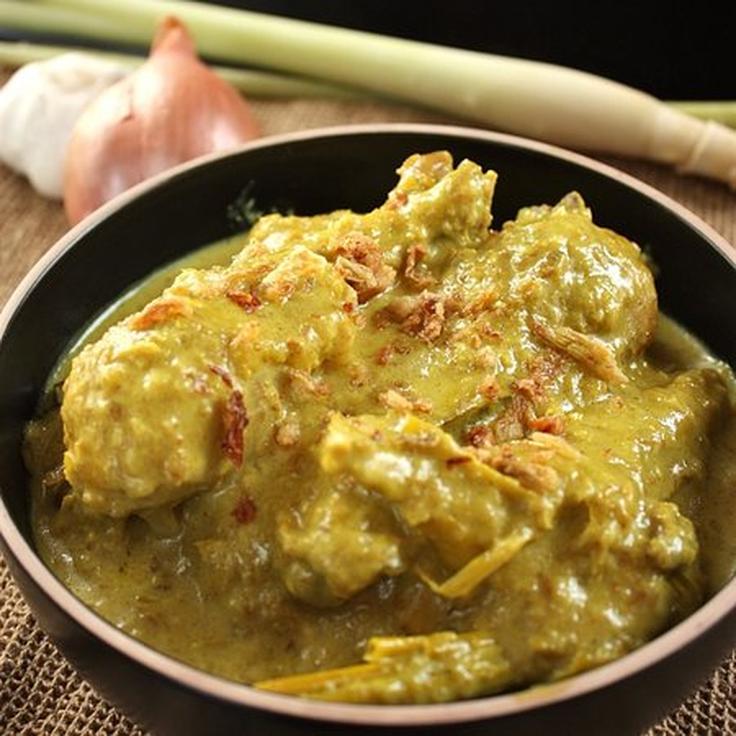
- Bali Sate Lilit: Now, let's dive into Bali Sate Lilit – a creative twist on the classic sate. Here, minced or ground meat gets cozy with bumbu Bali and other spices.
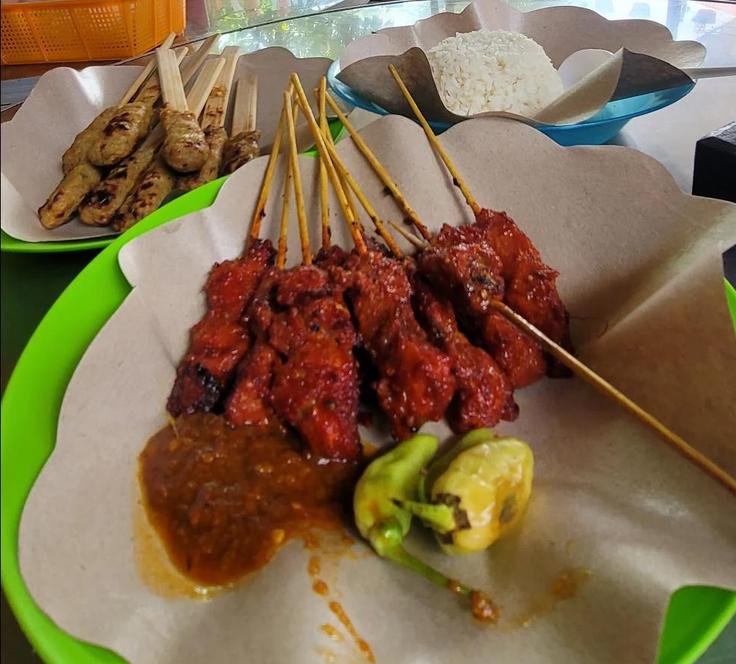
This flavourful mixture is twisted around a skewer or lemongrass stalk and grilled to perfection. It's a whole new sate experience you won't want to miss.
- Sambal Udang: Hold on tight for Sambal Udang – big, succulent prawns cooked in a spicy sambal featuring sautéed onions, green pepper, red chilli peppers, and the magic of basa gede spice paste and coconut milk. A sprinkle of palm sugar and chopped kaffir lime leaves take this dish to new heights.
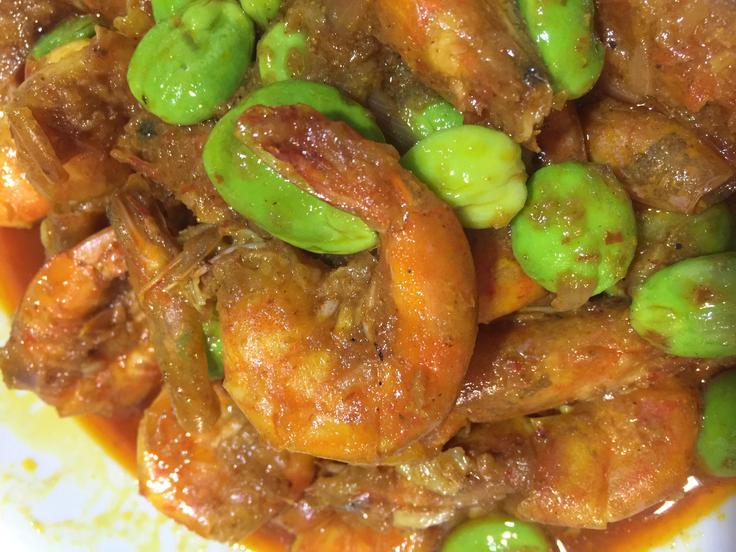
- Beef Rendang: Get ready for Beef Rendang – tender meat slow-cooked in a mixture of coconut milk, spices, and roasted coconut paste.
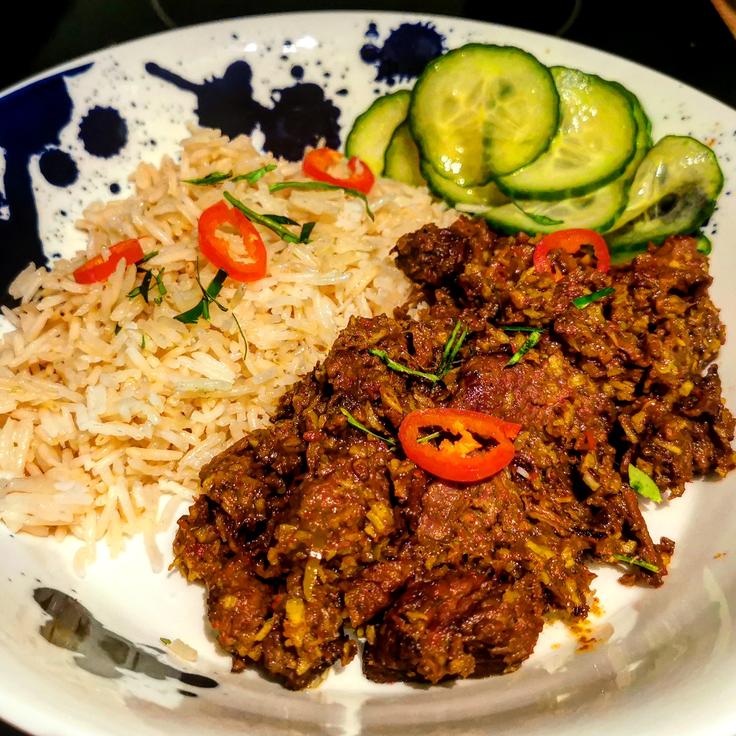
The coconut milk evaporates to create a thick, rich spice crust that'll have you savouring every bite.
- Cap Cay: Let's talk about Cap Cay – a dish with a hint of chop suey vibes. It's a Chinese-style Indonesian stir-fry or stew starring cabbage and other veggies. The mix might change based on where you enjoy it, but one thing's for sure – it's a tasty experience.
- Bumbu Bali Fish: Time for Bumbu Bali Fish – a dish that's all about fish chunks simmered in coconut milk and basa gede spice paste. The result is a rich, spicy, and oh-so-flavorful creation that seafood lovers will adore.
- Nasi Jinggo: Last but not least, let's talk about Nasi Jinggo – a savoury delight made from finely chopped combos of various ingredients like green beans, green papaya, shallots, pork meat, pork skin, eggs, and coconut.

Served on banana leaves, it's a time-intensive treat that often makes appearances at ceremonies and celebrations. Keep an eye out for it on the streets too!
- Tipat: Let's talk about "Tipat," also known as "ketupat" in Indonesian. It's a boiled rice cake wrapped up in a diamond-shaped leaf. Think of it as a rice alternative that's enjoyed all across Indonesia.
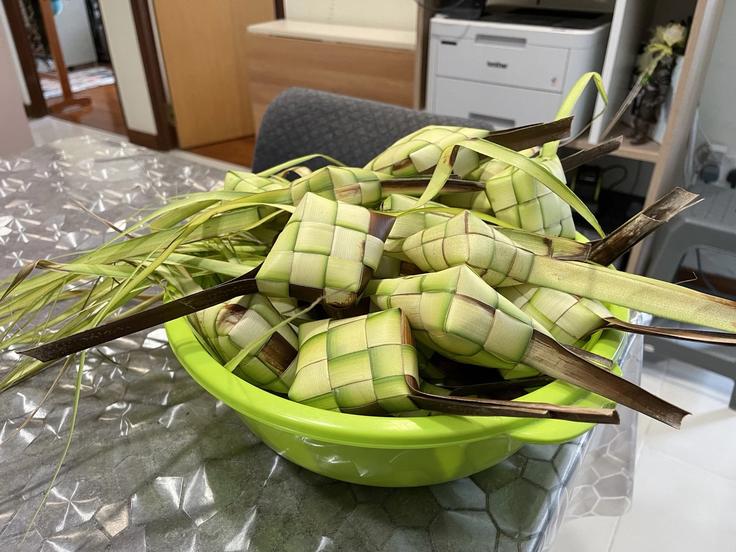
However, Bali adds its own twist to Tipat. Take, for instance, "tipat blayag" – a Buleleng original that brings together tipat with veggies, fried chicken feet, shredded chicken, eggs, peanuts, fried shredded coconut, soybeans, chili paste, chicken skin crackers, and the flavorful chicken nyat-nyat sauce.
Then there's "tipat cantok" – a dish of steamed veggies with peanut sauce served with tipat, somewhat reminiscent of gado-gado. The perfect companions for these treats? Sip on some "es gula" or ice syrup drink.
- Rujak Bali: Let's move on to Rujak – a beloved Indonesian snack. Picture a fruit salad featuring sliced fresh fruits like pineapple, cucumber, unripe mango, jicama, and even pomelo.

Balinese cuisine offers a variety of rujak combinations. You've got "rujak gula" from Buleleng – it's served with a mix of brown sugar sauce, vinegar, shrimp paste, and a hint of chili.
Then there's "rujak kuah pindang" – rujak paired with an infusion of fish boiled in spices and salt. If you are up for a bold kick, try "rujak cuka" with its strong blend of vinegar, sugar, and chili.
"Rujak colek" takes a dip in a red, spicy, and savory sauce, while "rujak bulung" swaps out the fresh fruits for seaweed, sometimes with a touch of bean sprouts or noodles. Balinese rujak is a flavor journey you won't want to miss.
Balinese Desserts
When it comes to wrapping up a meal on a sweet note in Bali, their desserts are the ultimate go-to. These sugary delights are all about using local gems like coconut, palm sugar, and rice flour to create a taste bud symphony that's hard to resist. You can find these treats practically everywhere – from cozy warungs to bustling markets and even fancy restaurants.
Let's talk about a must-try:
- Klepon: These little goodies are made from cute balls of glutinous rice flour, generously stuffed with palm sugar and rolled in a cozy bed of grated coconut.
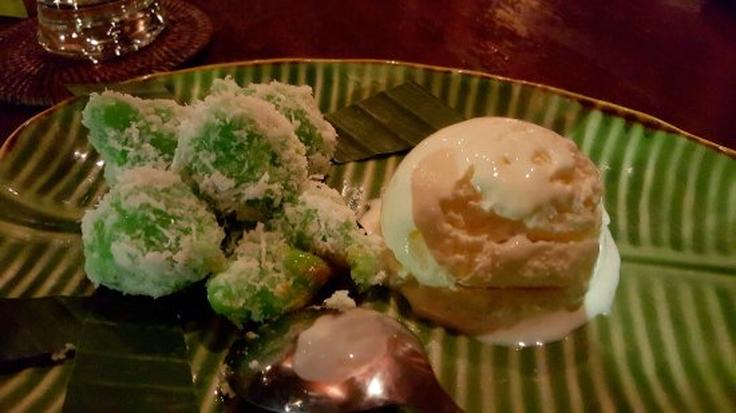
- Jaja ketan: A classic. A sweet rice cake that gets its charm from a crown of coconut shreds, adding that slightly nutty and sweet touch we all crave.
- Feeling a bit indulgent? Enter dadar gulung – think of it as the crowd-pleaser. It's like a crepe, but with a twist. Made from rice flour and coconut milk, it cuddles up to a mixture of cooked coconut and palm sugar.
- But the dessert parade doesn't stop there. Say hello to bubur sumsum – a velvety white rice porridge with a coconut twist, topped off with a drizzle of palm sugar syrup.
Then there's batun bedil – these sticky rice flour dumplings take a dip in a pool of brown sugar sauce, making each bite an explosion of sweetness. - Have you met laklak? It's a Balinese pancake, but not your average flapjack. Crafted from white rice flour and topped with freshly grated coconut and a touch of palm sugar syrup, it's a delightful twist on a familiar favorite.
- And for those seeking something unique, bubur injin is your answer. It's a black rice pudding, cuddled up with coconut milk and palm sugar, delivering a combo of flavors that's both comforting and intriguing.
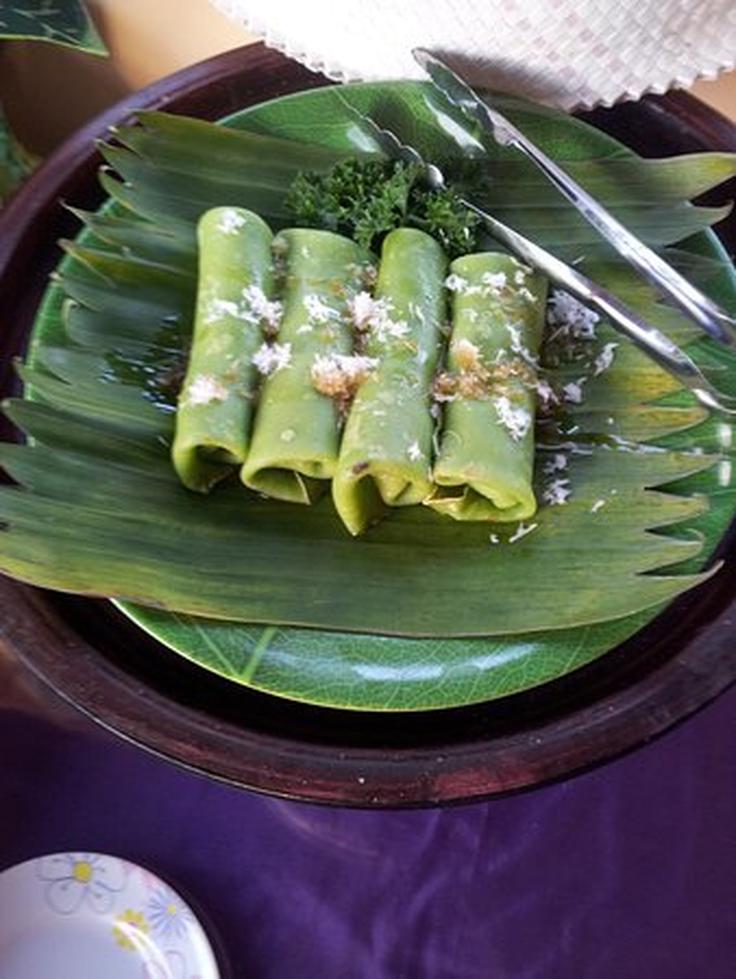
- Es Daluman: Es Daluman, a cold dessert that combines grass jelly, palm sugar syrup, and coconut milk in the most delightful way. It's the perfect treat to stay cool and make the most of your time on the island.
- Jaje Bali: Let's talk about Jaje Bali, a delightful sweet snack that's like a colorful party on a plate. This treat brings together different cake elements, all made from glutinous flour, with a sprinkle of grated coconut on top and a drizzle of palm sugar syrup.
It's the kind of snack that instantly brings a smile to your face. And guess what? You can discover this tasty delight in traditional markets or local villages. It's like a little piece of Bali's vibrant food culture that you can savor and enjoy.
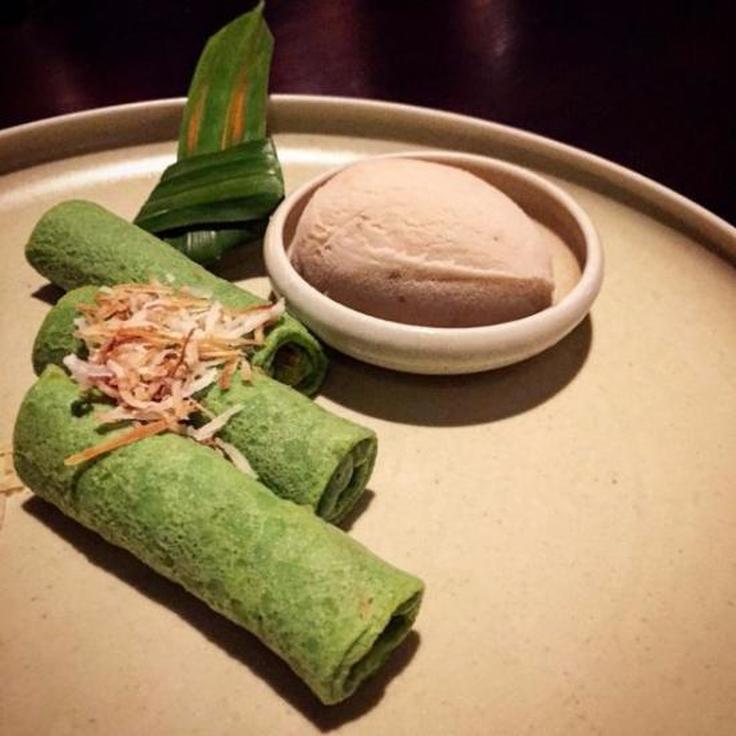
- Bubur Sum-Sum: Let's dive into the world of Bubur Sum-Sum, a bowl of pure comfort. Imagine a creamy porridge crafted from rice flour, just waiting to warm your heart. And the best part?
It's crowned with a rich, molasses-like palm sugar sauce that adds a touch of sweetness, along with some grated coconut to bring it all together. This dish is like a cozy hug for your taste buds, a reminder of the simple pleasures in life. - Bubur Injun: Black sticky rice mixed and coconut milk. Very similar to mango sticky rice in Thailand.
- Bantal: Imagine these delightful bundles of joy: sticky rice, coconut, sugar, and a burst of fruity goodness. Usually, it's bananas that take the spotlight, but sometimes you might find a surprise twist with a hint of orange rind or the essence of mango.
- Luwak Coffe: You might have heard of it as civet coffee or even "poo coffee". Curious why it got those names? Well, it all starts with these weasel-like creatures known as civets. They're set loose on coffee plantations during the night, driven by their preference for feasting on only the finest coffee berries.
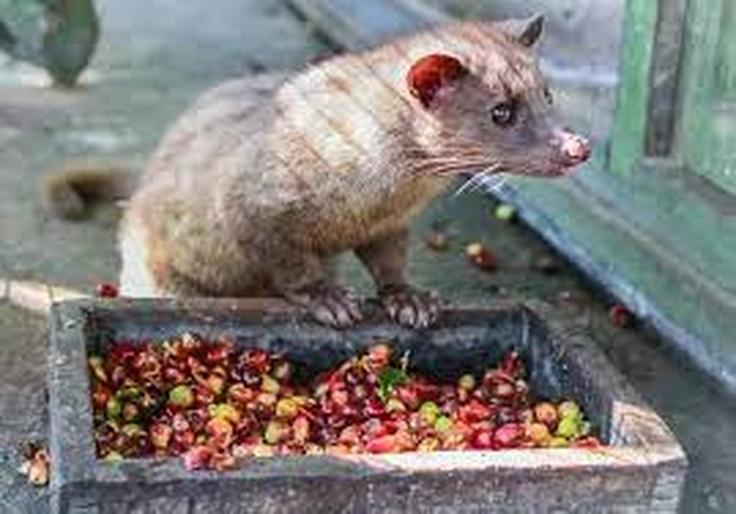
These little civets dine on the coffee berries, but here's the twist: they actually pass out the coffee beans after digestion. These coffee bean-filled droppings are carefully collected and thoroughly cleaned. After that, the coffee beans go through the roasting process over an open flame.
What's the outcome of this peculiar journey? The most pricey coffee on the planet. Over on Bali, you can enjoy a cup at a Luwak plantation for about $4.
Conclusion
As we conclude this exploration of Bali's culinary landscape, it's clear that the island's reputation for exceptional cuisine is well-deserved. From the aromatic sambals that awaken your senses to the mouthwatering rendang that embodies the heart of Indonesian flavors, Bali has much to offer in the world of gastronomy.
Each dish we've delved into provides a window into the cultural richness of this enchanting island. Whether you're planning a visit or simply looking to broaden your culinary horizons, diving into Bali's renowned cuisine is a journey worth embarking upon.
